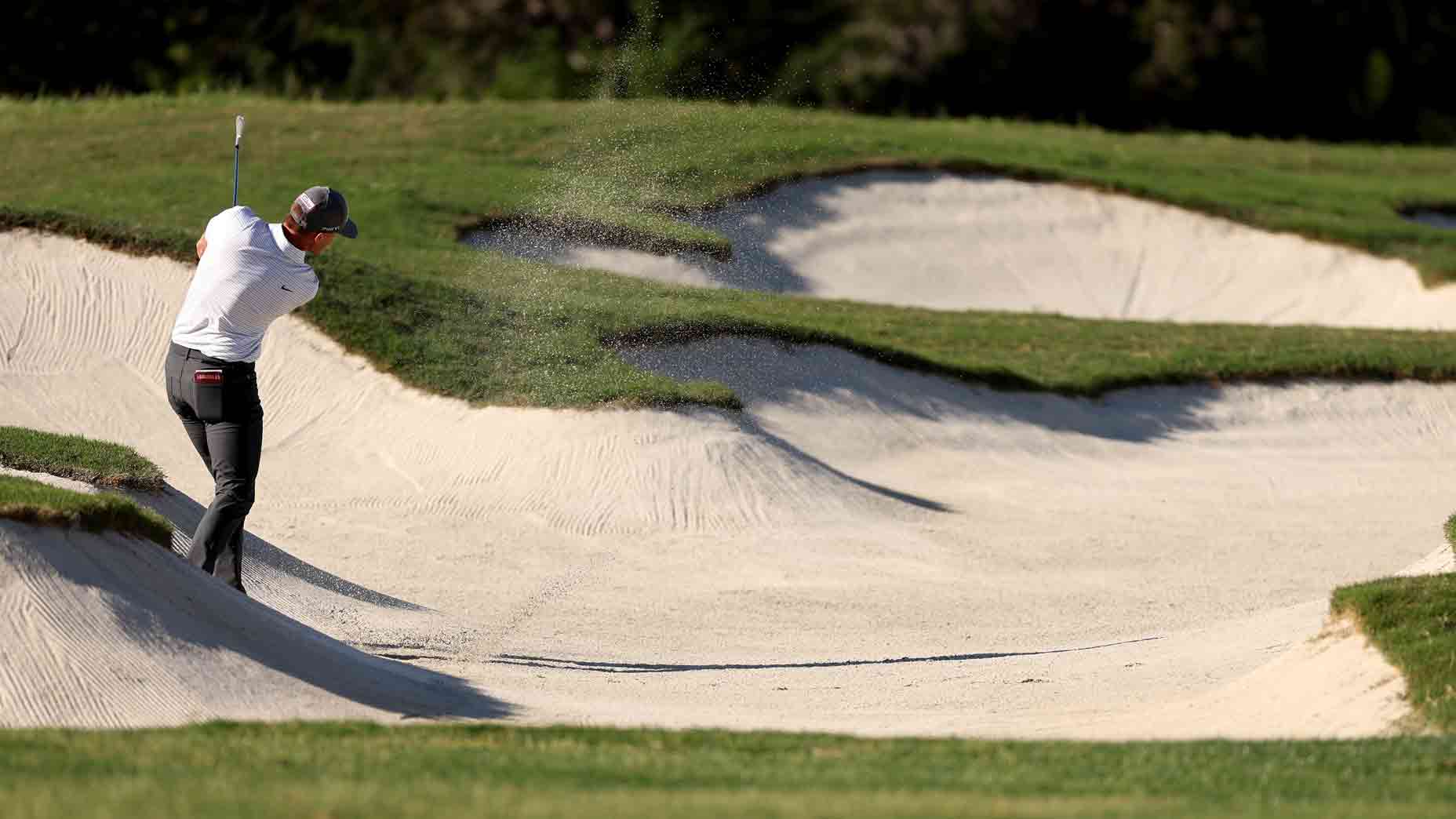There are so many golf myths out there that can really get in the way of your improvement. While many are meant to have good intention, they can also cause confusion and stunt the growth of your game.
So what are some of the most popular myths that can hold you back? I highlight 10 common ones below — and help debunk them.
These popular golf myths could be confusing you
Many amateur players often take unsolicited advice from other amateur golfers — which is never a great idea. So if you’ve heard some of the following golf myths before, it’s time to rethink them.
1. You must get under the ball to get it into the air
Sure, in sports like tennis, it’s important to get under the ball to get it in the air — but not in golf! Since the golf ball is round and sits on the ground, you physically can’t get underneath it unless it’s sitting on a tee. The bottom of your club would ideally make contact with the turf when the ball is on the ground, so getting the club down to the turf is a better way to try and lift the ball.
2. When far away from your target, use your 3-wood
Many amateur players don’t have the ability to consistently hit their 3-wood like the pros do — mainly due to the length of the club and the less-lofted face. So when you’re in the fairway and have a long way to go to the green, it’s best to use a more lofted fairway wood like a 5-wood or 7-wood.
3. Always use a sand wedge around the green
For whatever reason, many new golfers feel inclined to use their sand wedge when around the green all the time. But remember this: The smaller the stroke, the less the chance for error. So if you’ve got some green to work with and room to roll your shot, using a more forgiving club with less loft is a smarter decision. So I always recommend going with a gap or pitching wedge when making a smaller stroke.
4. Always open the face in greenside bunkers
Many amateurs believe that opening the clubface in the bunker is an absolute must. But the average player often doesn’t need to do this — mainly because they have lower clubhead speed. This is where club selection is so important, as using a 58- or 60-degree wedge can replace the need to open the face while in a greenside bunker. Your lob, sand, and gap wedge likely all have enough loft and bounce to clear most bunker lips, so I recommend using one of those options to help keep things simple for yourself.
5. Don’t take sand in fairway bunkers
This is one of the more common golf myths I hear, and it’s adding strokes to your scorecard! Trying to pick the ball cleanly off of the sand in a fairway bunker can lead to excessively thin or topped shots — many of which may not even clear the lip. When you find yourself in a fairway bunker, adjust the ball position to be more centered, which will help you achieve ball-first contact and then spray some sand.
True Spec Fitting
View Product
6. A lower-lofted driver is better for more distance
Both technology and data have allowed us to be very accurate when it comes to understanding launch angles. So the days of thinking that a lower ball-flight will roll more and produce more distance has been proven to be untrue. To determine which clubs are best for your swing, I send my students to TrueSpec Golf, who are brand agnostic fitters with top-notch technology.
7. Don’t let the club get behind you
Getting the club behind you means getting it behind the parallel line between your shoulders. So when you make a backswing and your shoulders turn, yes, it’s OK to have the club appear to go behind your back. Unfortunately, this often gets misunderstood, and can result in a backswing that travels too straight back and doesn’t allow the torso to rotate. The restricts your depth, decreasing power.
8. Popping up a drive because the tee was too high
Sure, there’s a small chance you popped your drive up because the tee was too high, but, more than likely, it was caused by a downswing that was too steep and glanced down the back of the ball. To correct this, check that your ball position is forward and that your shoulders are tilted back away from your target at address. By doing this, you’ll be able to sweep the ball off the tee, making solid contact each time.
9. Thinking you decelerated when a putt comes up short
When a putt comes up short, many amateur players just assume it’s due to deceleration. In reality, a putt often comes up short for two reasons: You either didn’t hit the ball in the center of the clubface, or your backstroke wasn’t large enough. So when you have a longer putt, you need to be willing to swing your putter back farther to generate the necessary power in the downswing.
10. Don’t use your wrists while chipping
Your chip shot, also called a bump and run, is a stroke motion where the golf ball gets into the air and rolls more than it carries. It’s a very forgiving motion, and should resemble a putting stroke that doesn’t have a lot of moving parts. Because of this, many amateurs think they shouldn’t use their wrists — but many good chippers do! By relaxing your hands, your wrists are allowed to move a bit, helping improve both feel and touch.
